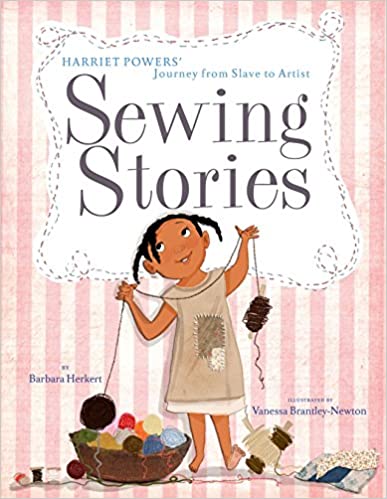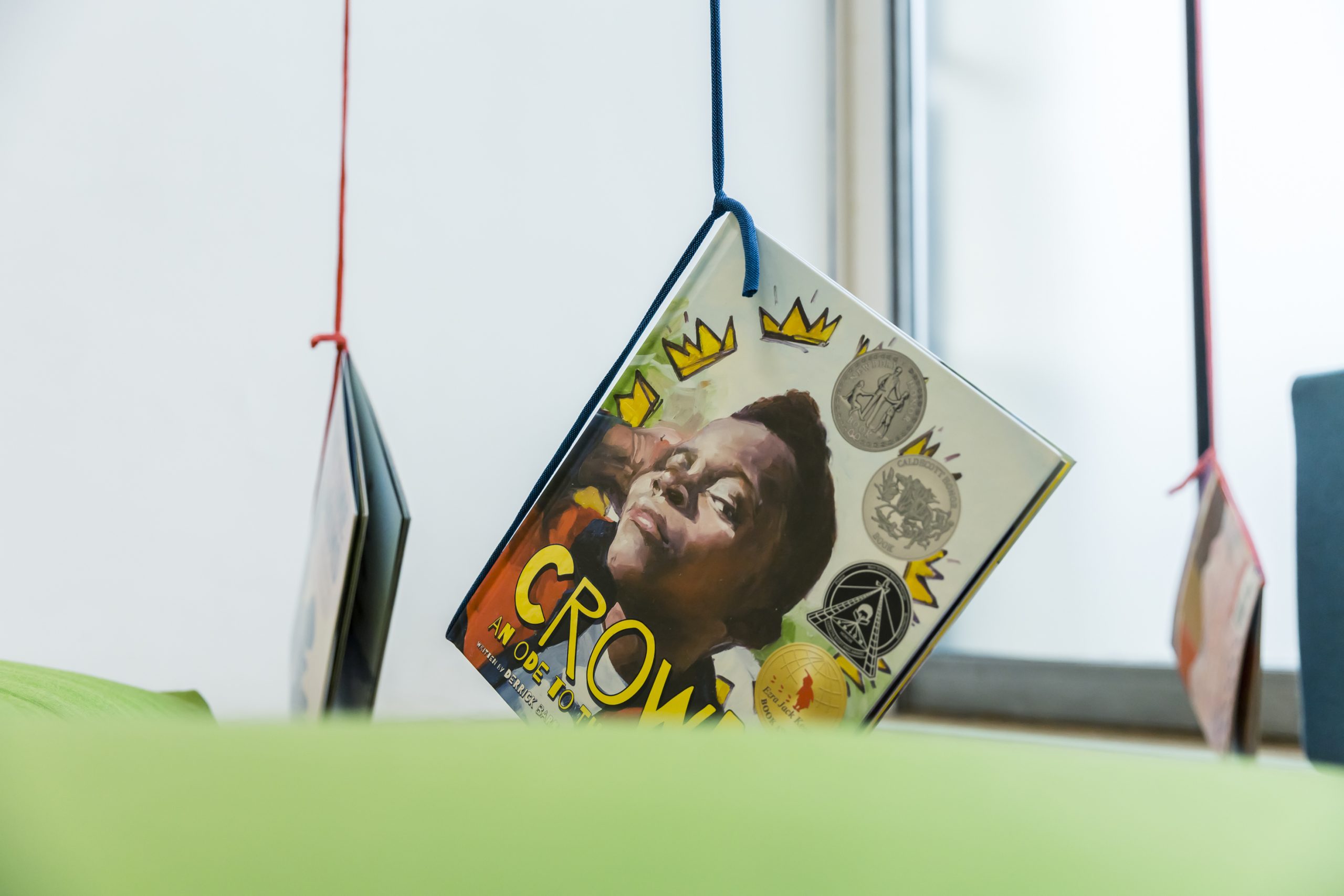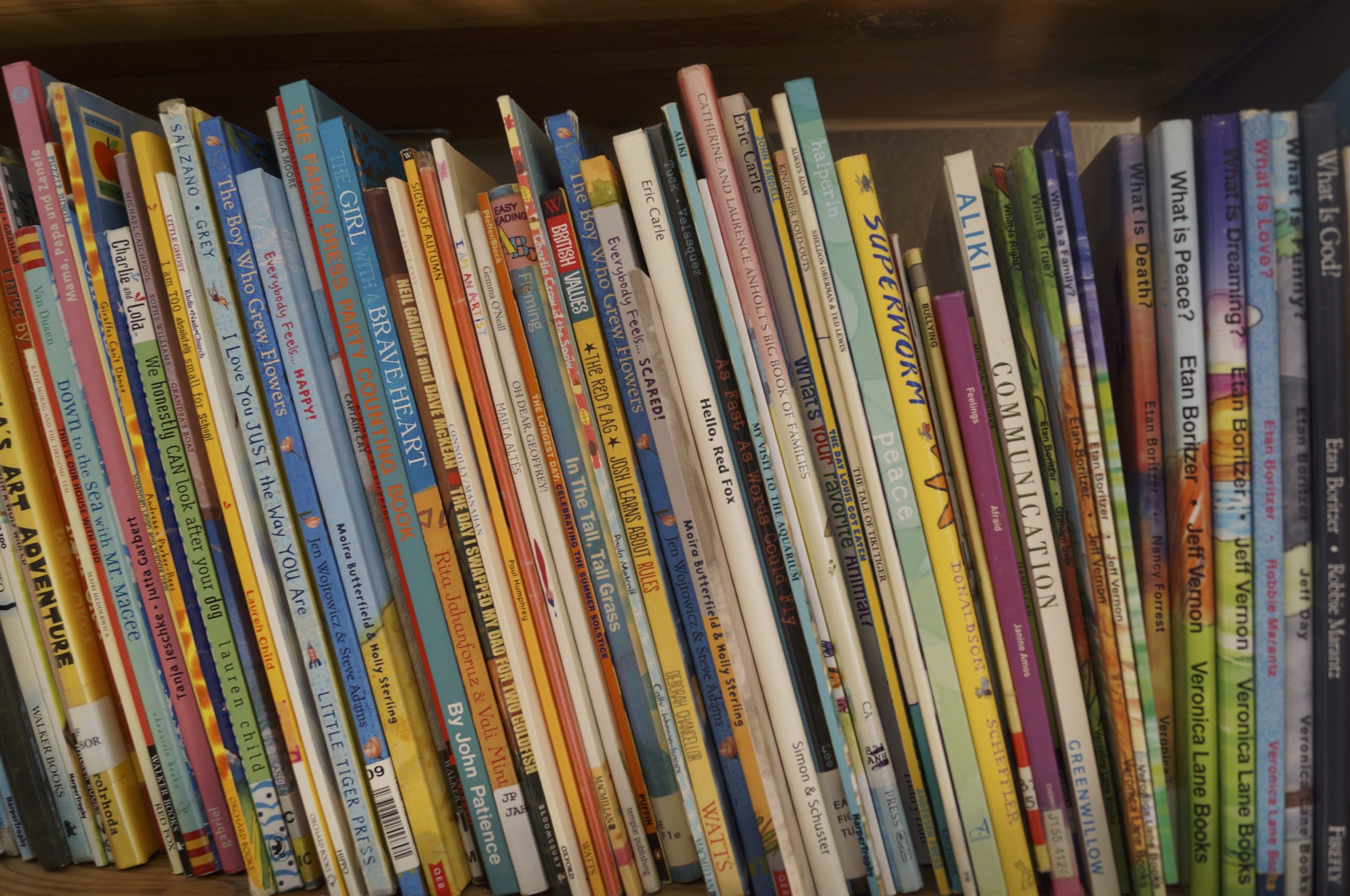15 Dec Slow Reading with Children
Blog
Slow Reading with Children
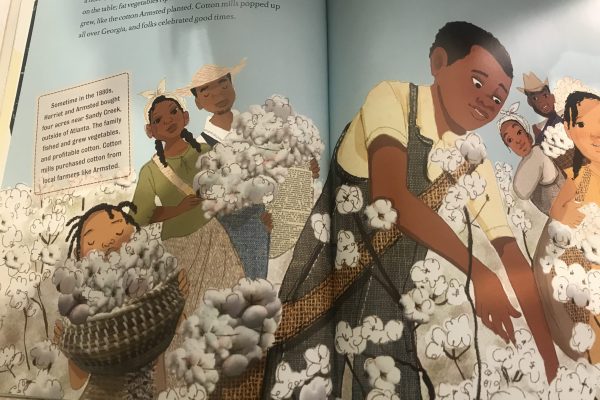
Do you remember the last time you read a book slowly? I mean very, very slooooowly? Slowly to the point, it felt as if you became one with the book and time stopped. Slow reading is a technique that increases reading compression by allowing the readers to really consider what they are reading.
The pandemic slowed life down for us and our pace of devouring books.
‘Sewing Stories’ Review
As we unwind to read ‘Sewing Stories: Harriet Powers’ Journey From Slave to Artist by Barbara Herkert’, I announced to my child that we would be slow reading today.
The excitement of knowing bedtime will be a lot later added onto it. My 5-year-old and I gazed at the book cover.
We talked about the basket, the yarn, colors of the yarn, and she made a connection to the hats a neighbor knitted for us from yarn. She imagined what a cat would do if it were near the yarn. We noticed the stitches around the book title, she asked why they didn’t stitch the words as well.
Next, we fastened our eyes on the lines, shades of pink, the girl in the center of the page with dreamy eyes and a joyful smile, the cool patch stitched onto her dress, the spindle, prints on the patches, her height…nothing went undetected.
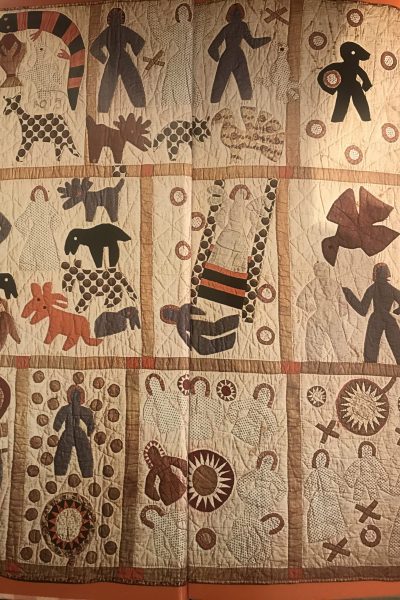
We turned to the front endpaper. Beige and brown filled the page, it was a picture of a quilt. Our fingers ran over the pictorial quilt and stared deeper into the patchwork illustrations. We made up stories for each square.
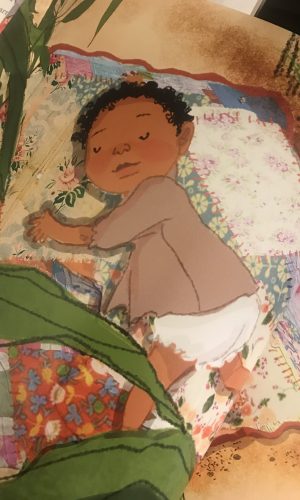
The moment we reached the page with the baby sleeping on the floor, she remembered seeing a picture of her sleeping on a farm just like the child in the image.
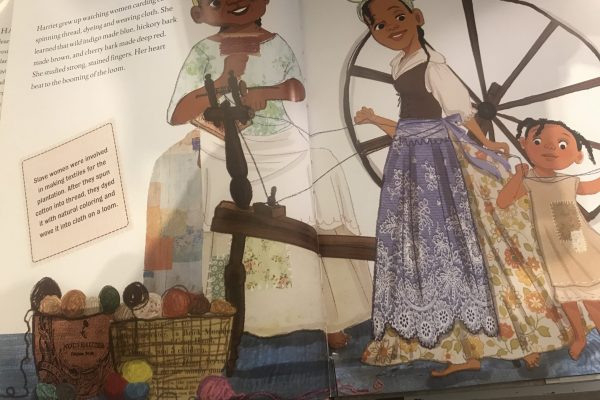
On the next page, she recognized the spinning wheel and made a connection to the spinning wheel in her favorite books (“l love my hair”). We admired their beautiful skirts, aprons, hair ties, and expressions.
This time the baskets had writing on them, one basket could have been made out of a newspaper from a slave advertisement listing. We wondered why they were barefoot,
As we read slowly, softly, quietly, her little sister sat with us holding a book. She was starting to get impatient as she waited to have her story read afterward. Still, she engaged in our observation. We arrived on a festive page. As I read to her, she imagined feasting on peach pie, ginger cake, collard greens, and barbecue.
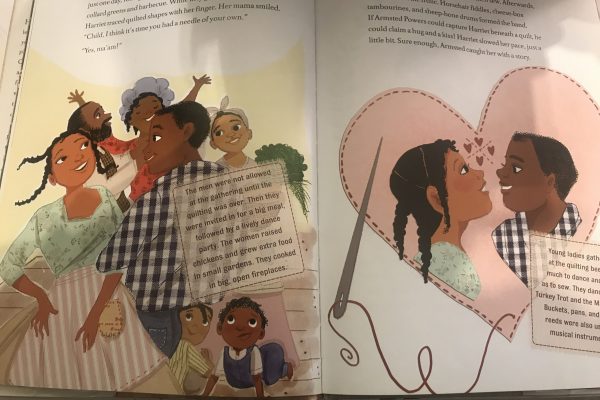
“They are singing and dancing,” my eldest exclaimed. Her sister redirected her attention back to us, “I don’t want to sing and dance.” My oldest pointed to the page and said, “No! They are singing and dancing.”
“I don’t even hear the music,” said the little sister. My oldest replied, “You can’t hear it because they’re making music in the book.”
“Ooohhh!” she complained. “I didn’t want to hear the music anyway.” We heard the note of disappointment in her voice.
We continued chatting about the page. In that moment, they became one with books. They decided on a song that they would sing. Their fascination with the moods and joyous moments in the story set the stage for an almost two hour long slow reading.
Most importantly, they forgot they were reading a book! The story felt real to them. And this made me appreciate reading slowly even more.
We tried to imagine how the freshly picked cotton felt on our fingertips. We sniffed to imagine the odor associated with the soft, fluffy balls. Our eyes imagine a white purer than the one shown in the illustration.
Pondering…reflecting…connecting…meditating. After spending time with Harriet and her family, her world became our world.
Slowly, we continued to read and drew connections from what laid on the pages with our lives.
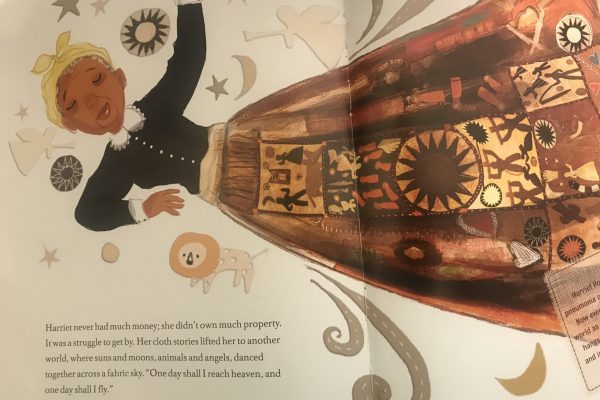
“Her cloth stories lifted her to another world, where suns and moons, animals and angels, dance together across a fabric sky.”@barbaraheckert
Just like Harriet, we too entered a fictitious dream, this time we entered Barbara Herkert’s world; we were inside the book, connected to Harriet, and life during her times.
The author’s profound truthful message reaches high and wide into our hearts, touches us so deeply.
We got to explore the stories in her story: how slaves at that time were not allowed to read and write, how patchwork was a way to preserve stories just like books, and how the folklore about how quilts were used to communicate messages about the Underground Railroad.
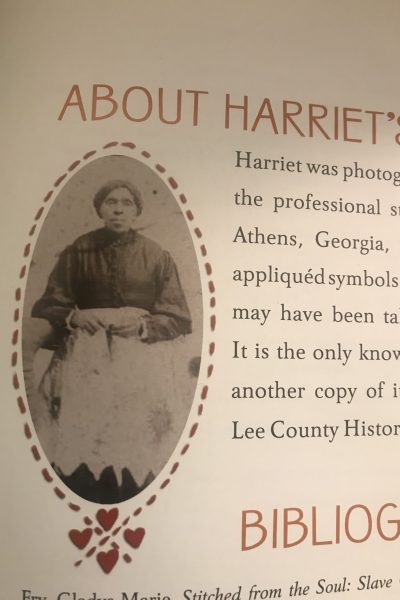
The back cover features a real photograph of Harriet. From there, it created more material to discuss. Moreover, picture books invite us to meet people we’d never get the chance to know.
They take us to places not available to us today.
They show us events we might have missed.
They transport us into worlds we would not belong in.
The girls and I gave ourselves the time to explore all the details we could in the book. Slow reading offers the opportunity for deeper understanding which is far more important than just reading.
Most of the time parents read a book all the way through, sometimes skipping pages, instead of stopping here and there to ask: what’s going on in this picture or do you want to point something out?
Children love reading pictures. Reading slowly is something adults have to practice to get comfortable with—it’s not realistic to slow read every night, but the nights we read slowly, I value the most.
Although we lost track of time, these moments are a treasure: being present completely is a gift. Someday when they are older and on their own, I want to savor these moments.
All this magic can happen when you slow down, go beneath, and connect with the story.
Toni Morrison’s Most Powerful Picture Book Quote Ever
There are so many children’s books that celebrat...
African representation in school matters
Representation matters because child need to see t...


